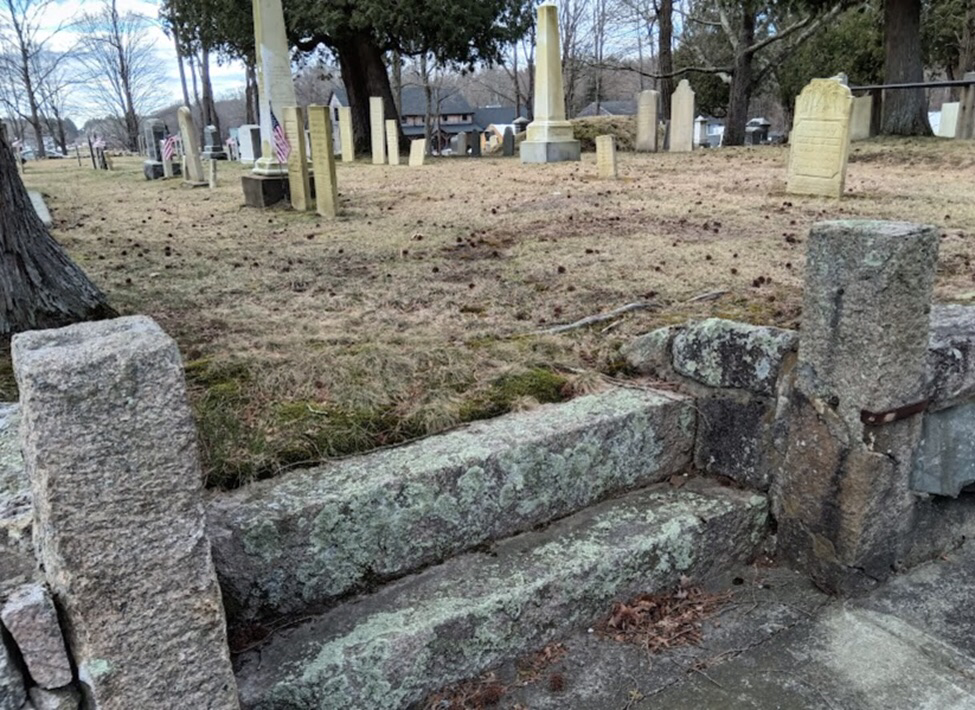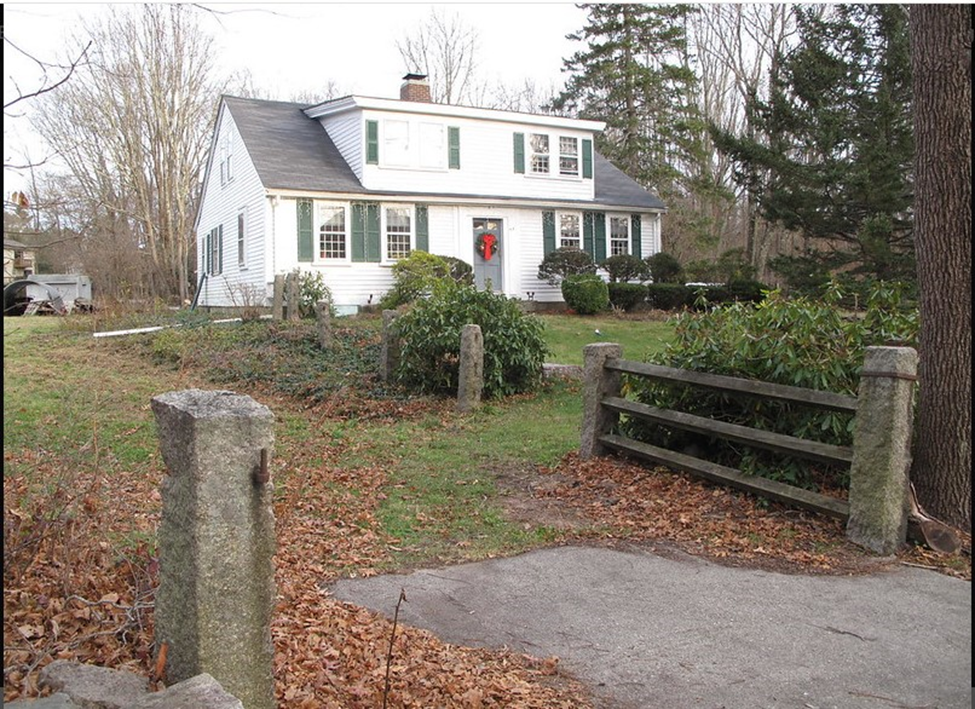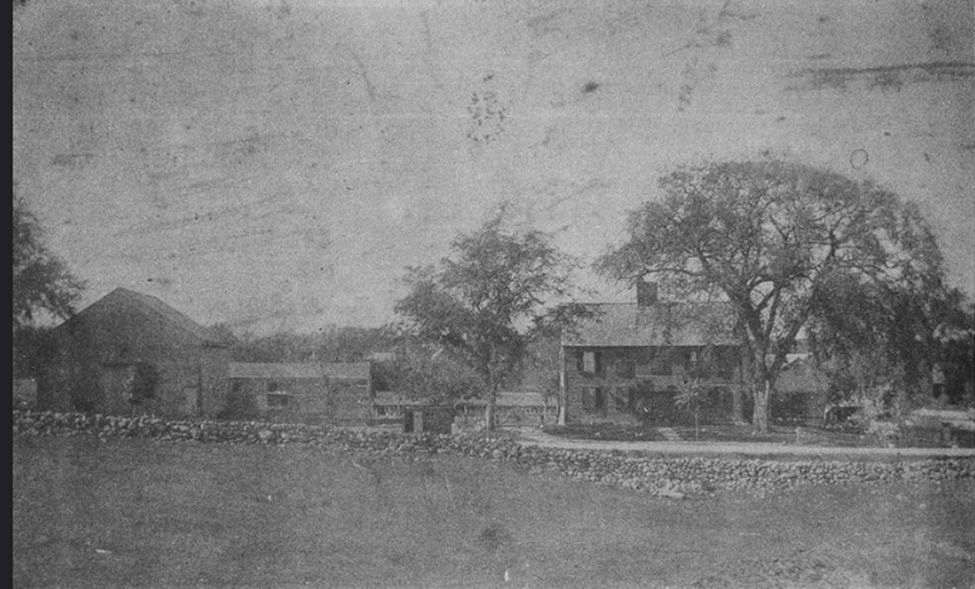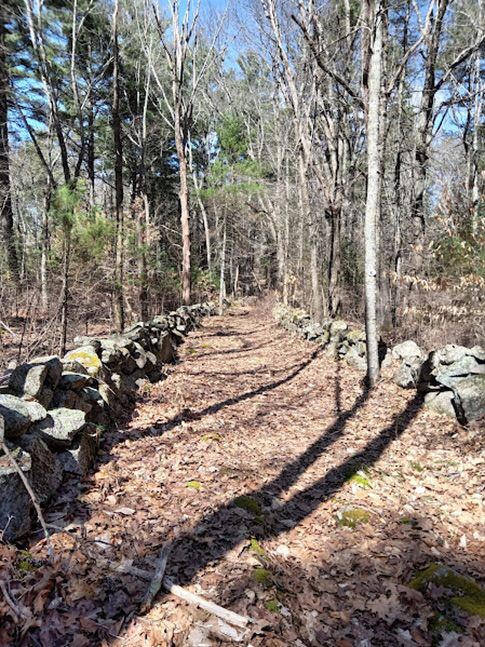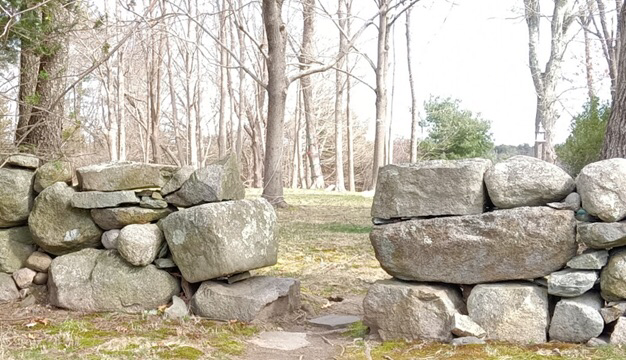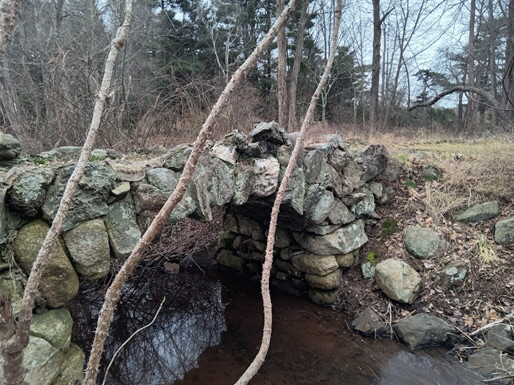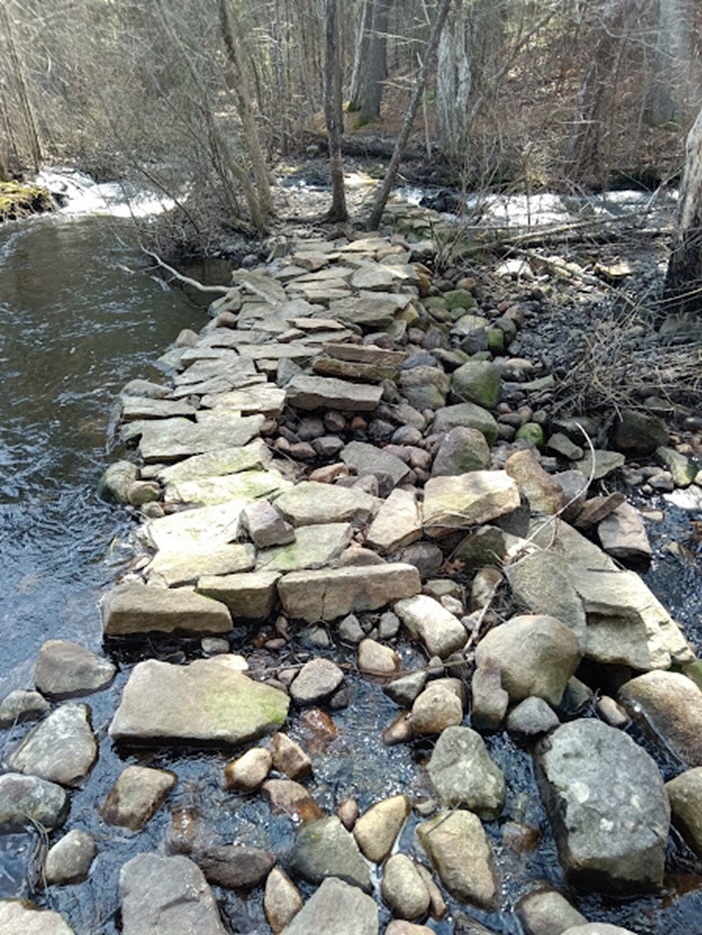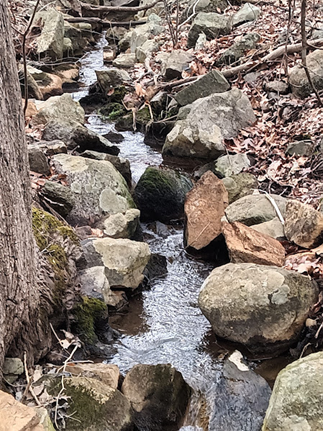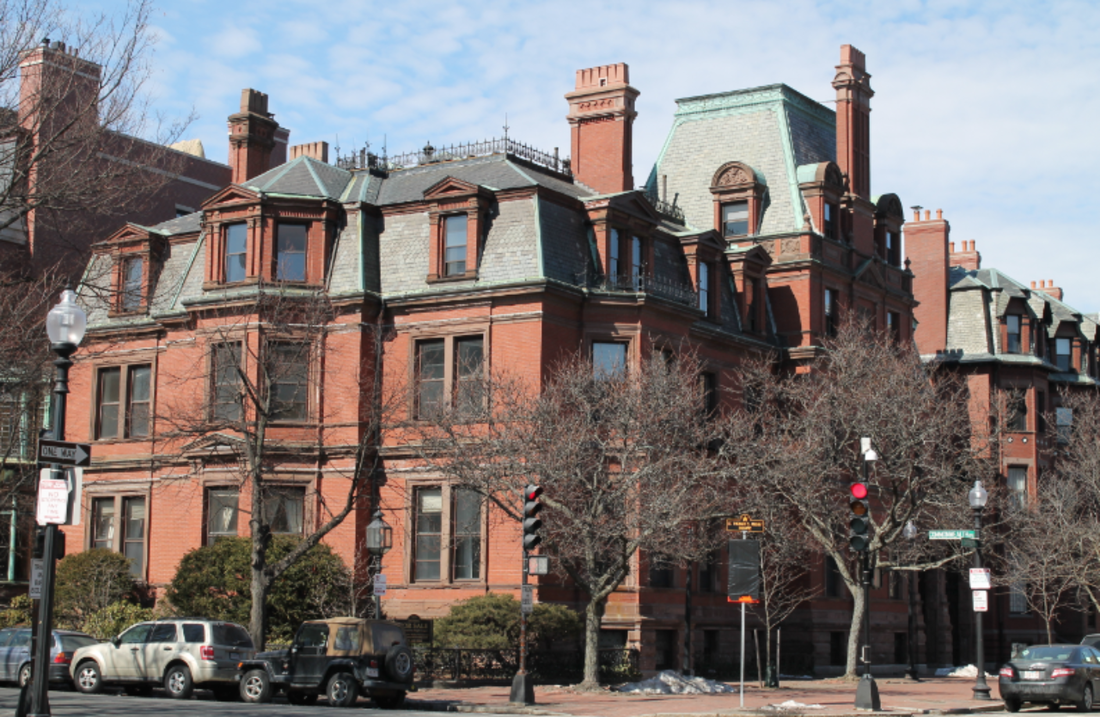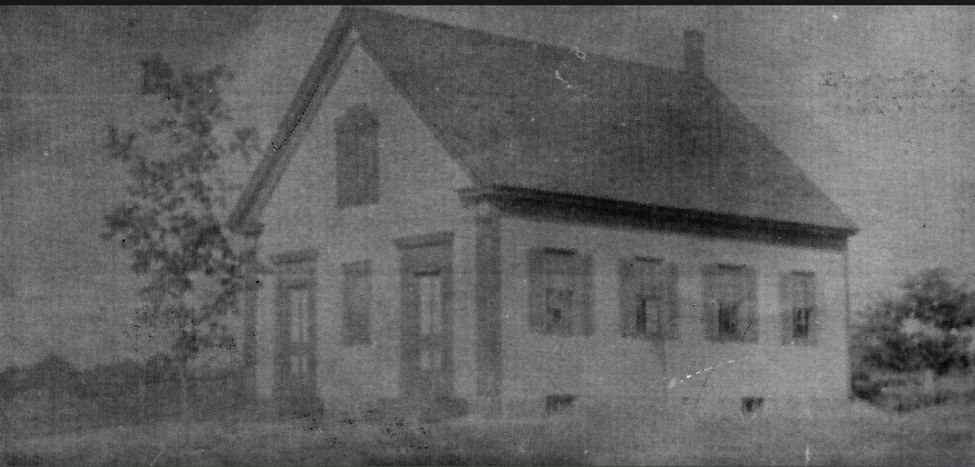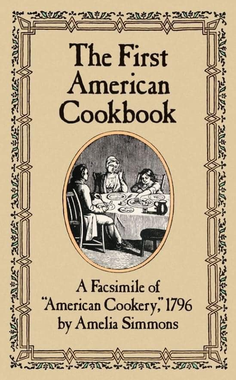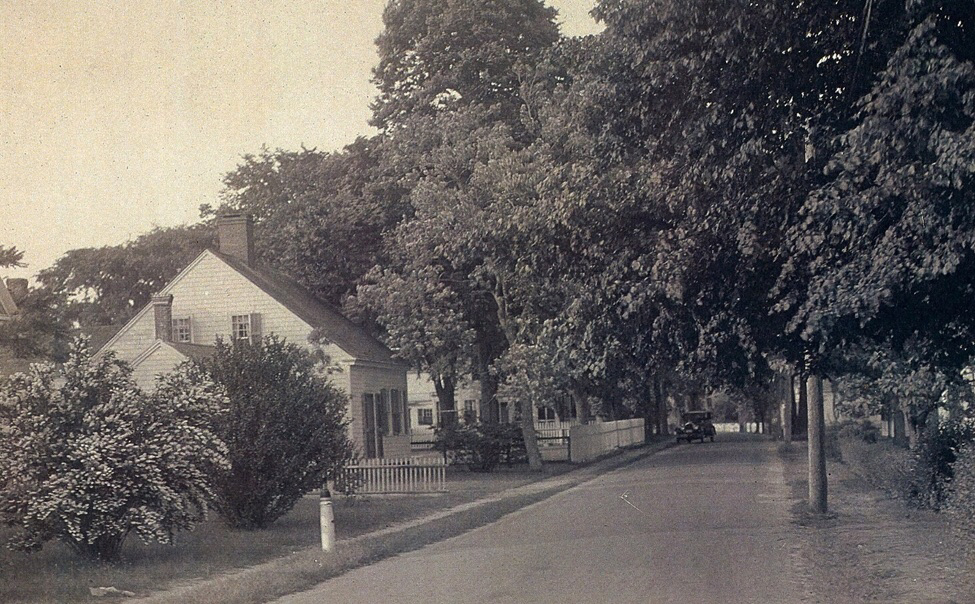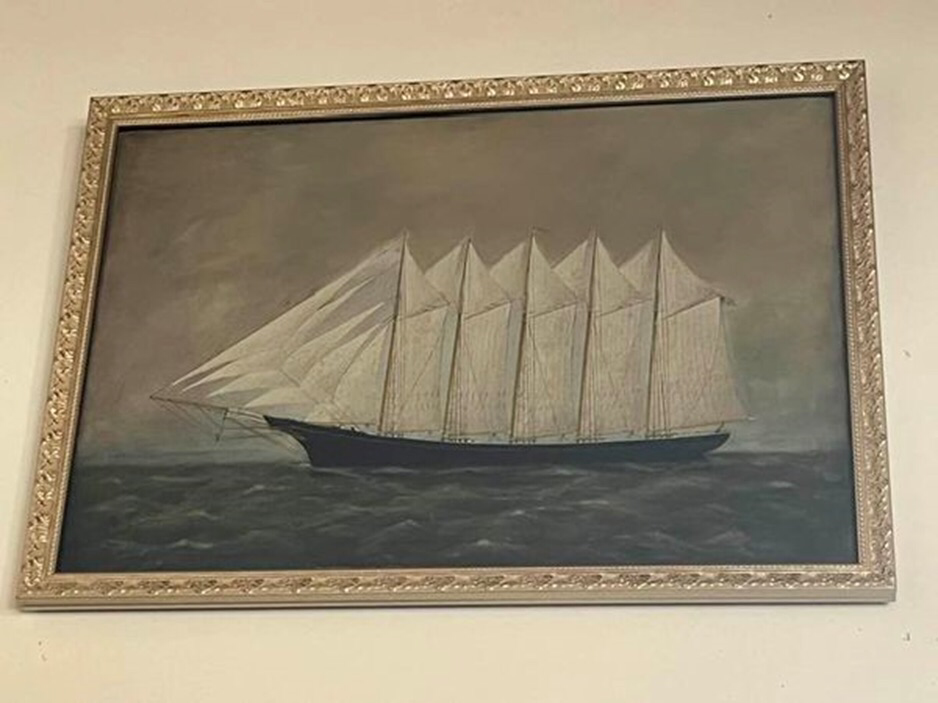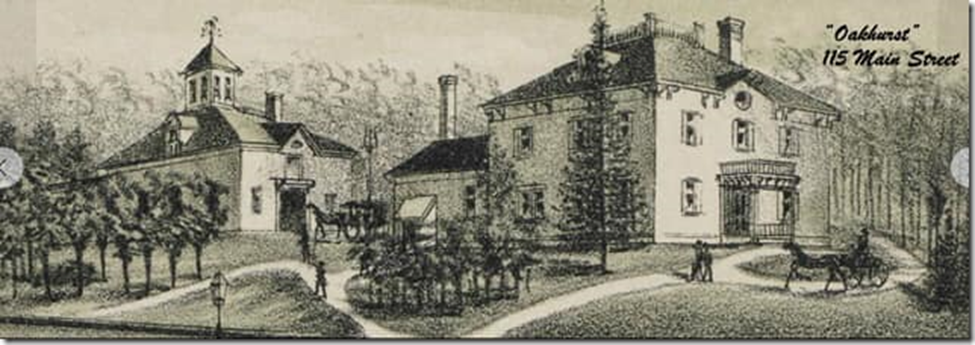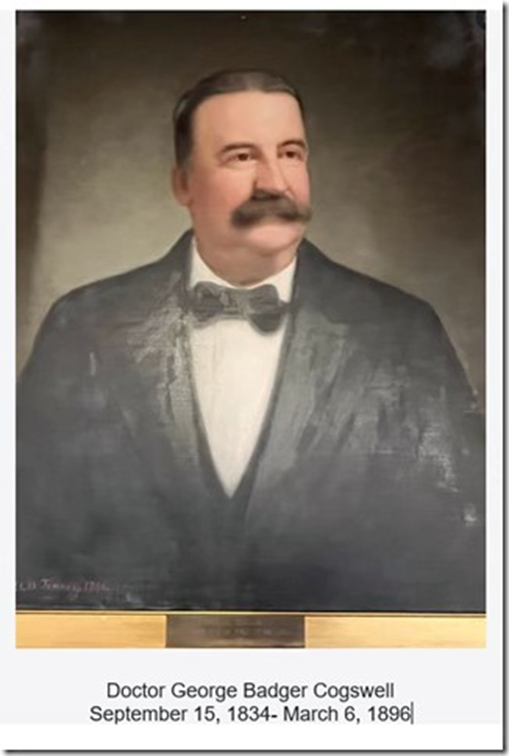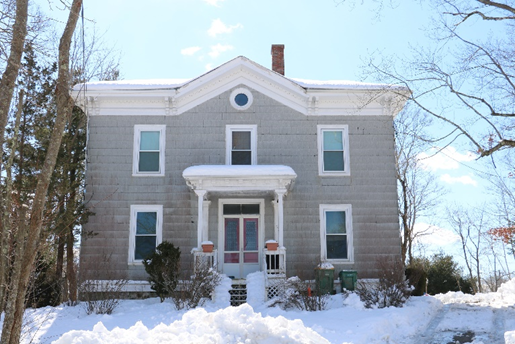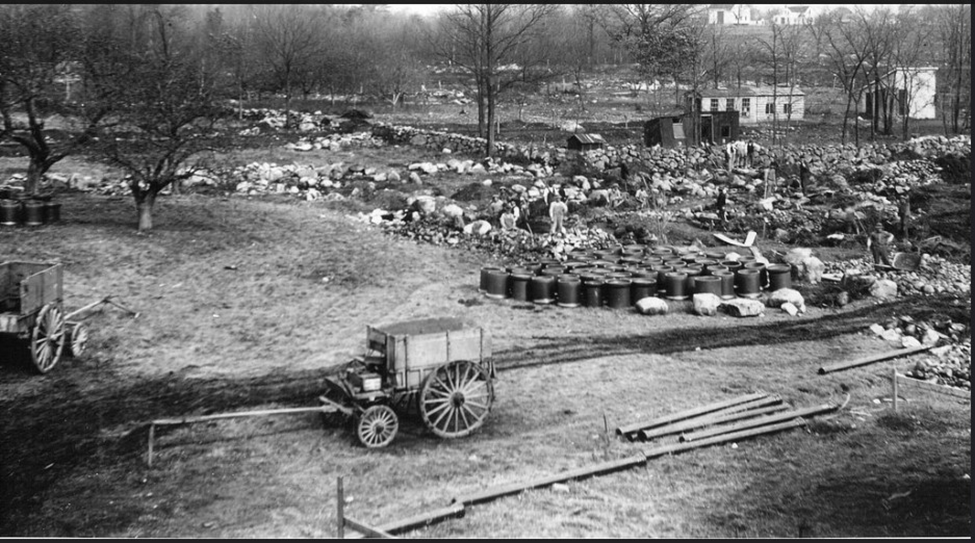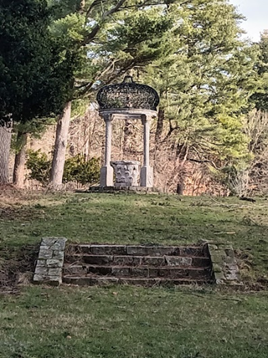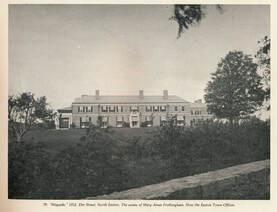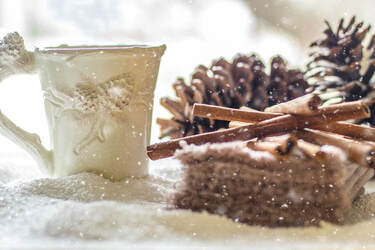|
Boston’s First Skyscraper In 1893 Easton notable Frederick Lothrop Ames constructed the first skyscraper in Boston. It is the second tallest masonry load bearing-wall structure in the world. It wasn’t replaced as the tallest building in Boston until 1915 when the Custom House Tower was built. The Ames Building is located at 1 Court Street and today serves as dormitories for Suffolk University students. Not surprisingly, the building was designed in the Richardsonian Romanesque style by the firm of Shepley, Rutan, and Coolidge. For many years the building served as the corporate headquarters of the Ames Agricultural Tool Company as well as other businesses. It held an important place in Boston’s financial community. One of its more recent incarnations was as a luxury boutique hotel, the Ames Boston Hotel. In 2018 the building was ranked 87 out of 100 on Boston Magazine’s list of the best buildings in Boston. It had already been added to the National Register of Historic Places in 1974 and later designated as a Boston Landmark. You can clearly see the influence of Richardson who passed away in 1886. His style was continued by his associates. The building is 14 stories tall and faced with sandstone and granite. Note the arches and Romanesque columns. More information can be found by clicking on the links below. Additional pictures and written materials from 2018 compiled by our Board Member Steve Anderson.
0 Comments
Do stones feel? Do they love their life? Or does their patience drown out everything else? Do Stones Feel by Mary Oliver Once you start looking, they are everywhere. The stone walls. And more. All kinds of purpose-built stone structures. In early days in Easton, stone, dependable and relatively permanent, was used to mark boundaries and show ownership. As early as 1713 there was a boundary dispute over the northern line of the Taunton North-Purchase. The marker was “a heap of stones on a great rock.” (Chaffin) Early colonists, everywhere in New England, acquired land, marked the land, sometimes with elongated upright stone or pillars. Root cellars like the potato cellar at Sheep Pasture and one (I believe) on the original Spring Hill property were built for storing root crops for human consumption or animal feed over the winter. These particular cellars were built relatively late (!890’s) and were part of planned estates but still represent the concept. Early mill industries needed stone and/or waste stone to create dams. A walk through certain woods today will reveal many small dams, or channels, created at various times to direct water. In the 1820’s and 1830s, in relatively prosperous times,“tossed walls were improved to classical double walls.” (Thorson) Large boulders were moved if necessary- blown up, buried, or moved with devices. In Easton, as elsewhere, graveyard walls were built with more care than farmyard walls. Here is a current photo of a bit of the wall and an entrance to the Washington Street Cemetery. Washington Street Cemetery, 1796. The Hayward House at 49 Poquanticut Ave, 1803, illustrates the use of stone in the gate that also serves as a property marker. Photo by Kathryn Grover and Neil Larson, Massachusetts Historical Commission, info., Easton Historical Society. The Keith House, 29 Highland Street. Easton Historical Society. Note the beautiful wall.
There have been some stone remains I’ve found in the woods that are a mystery to me. I’m doing some personal research on older stone structures in town. If anyone reading this has any information about old cellars, ruins, or anything interesting, please let me know. I am particularly interested in the Wheaton Farm property, of which I know very little. I am looking for more ‘everyday’ stone structures, not estate structures. Thank you in advance for any tips! Sources: Root Cellars in America. https://www.stonestructures.org/html/root_cellars.html Stone by Stone, The Magnificent History of New England’s Stone Walls, Robert M. Thorson, 2002. wbur.org 3/3/2024, podcast Easton Historical Society Anne Wooster Drury ehsnewsletter12@gmail.com Stone walls have caught my interest. Little in this world is more permanent than stone, particularly glacial boulders. Early settlers in Easton built with stone- walls, foundations, dams, bridges, monuments to the dead- and more. I’ve been wandering about and here are a few of the things that have caught my eye. If you walk the Rockland Trail at Borderland you’ll see segments of stone walls snaking through the woods on both sides. At one time these woods would have been fields. Stone walls in the woods today indicate that the area was settled at some point, usually pre-Civil War. Most wall building in New England occurred between 1775 and 1825. Families living on or near Rockland Street between 1750 and 1886 were the Bennett, Dean, Littlefield, Buck, and Selee families. Interestingly, much of Easton was cleared by 1830. According to an 1830 map in Easton’s Past as Shown Through Maps, (EHS, 1988) more land was cleared in 1830 than is cleared today. This meant lots of farming. The photograph below is of a segment of the trail closer to Rockland Street framed on both sides by stone. It appears to be an old road. Perhaps a farm road? Quite impressive at any rate. Section of the Rockland Trail at Borderland State Park. Most New England walls were ‘tossed’ walls, quickly created of unshaped field stone. ‘Laid’ walls were built with more care. Walls near homes tended to be more carefully or artfully laid. The wall below belongs to the Red House (Hayward House) on old Foundry Street. Wall on Foundry Street. The photo below shows a small bridge at the Governor Ames Estate which is now managed by the Trustees. The original house was built in 1862 at 35 Oliver Street and demolished in 1937 by the children of Governor Oliver Ames after both he and his wife Anna died. Bridge at Governor Ames. The bridge was built to be decorative on a beautiful, landscaped estate. Earlier walls and bridges were built for function. A dam of rocks and stones on Mulberry Brook. Wheaton Farm property. No idea of dating on the dam but beautiful with spring waters overflowing.
Fortunately for me there is much more to explore, and spring is on its way. Stones are mute teachers; they silence the observer, and the most valuable lesson we learn from them we cannot communicate. Johann Wolfgang von Goethe Anne Wooster Drury ehsnewsletter12@gmail.com Some facts taken from the book Stone by Stone, The Magnificent History of New England’s Stone Walls, Robert M. Thorson, 2002 I remember visiting what we called Lincoln Spring with my father and siblings as a child. Chaffin mentions Lincoln Spring when he writes that Nathaniel Manley, one of Easton’s first settlers, lived not too far from Lincoln Spring. When Isaac Leonard discovered bog-iron ore near Manley’s house Manley deeded him one third part of the ore that would be taken from it. Isaac Leonard was Manley’s brother-in-law. Manley himself was gone by 1726, having sold his house, ore and land to Eliphalet Leonard. Lincoln Spring remains and is located off Lincoln Street to the north, not far from the Holy Trinity Lutheran Church. What I saw at Lincoln Spring a few weeks ago. I parked at the Town Pool parking lot, walked back up the hill toward Lincoln and took the path on the right that leads north roughly parallel to Lincoln. You can also access the spring from the parking lot of the church. The land nearby is very wet. Lincoln Street itself was laid out in 1757. It began at the big rock near the intersection of Center and Main. I assume it’s the same rock that is still there today. If I understand Chaffin correctly, the original Lincoln Street ran differently so that the spring lay on the southern side of the road. It was a convenient spot to stop and water horses. Lincoln Street is likely named for Paul Lincoln’s family who settled there. Paul Lincoln fought with a company of Easton men in the Revolutionary War and at least three members of the extended family lived in the area. In 1887 the North Easton Water Company was created by Frederick Lothrop Ames, Oakes A. Ames, and our friend Dr. George Cogswell, among others. The North Easton Water Works was located at 101 Lincoln Street. Water from the series of springs “allowed the corporation to distribute water for residents, businesses and fire extinguishment.” Easton Historical Society. Easton Water Works, Lincoln Street.
According to Doug Watts in his book Tispaquin’s Revenge (2006), water in the pond behind the Town Pool and the Town Pool itself are spring fed from a system of natural springs that includes Lincoln Spring or are collectively Lincoln Springs. In the 1970’s there was a high shingled pyramid in the middle of the pool parking lot that covered the well-head. “Built in 1887 as part of the North Easton Water Works, the sand bottom of the Town Pool was originally designed as a filter bed for cleaning surface water before it was pumped to homes in the North Easton Water District. After the water supply was discontinued, the filter bed was repurposed in 1960 and is now used as a bathing beach which is known as the Easton Town Pool.” There is much more to this story that I will follow up with in later newsletters. Anne Wooster Drury ehsnewsletter12@gmail.com Early School in Easton/Howard Neighborhood It’s February and the time of year when Easton’s young people are always hopeful of a snow day. Nowadays they usually know about the snow day the evening before and can comfortably sleep in, not having to wait to hear if the fire whistle blows (2-2-2) early in the morning, like I did when I was young. But that was no hardship at all compared to the conditions in the first Easton schools. Imagine a time when there was no easy transportation to schools, schools were organized by neighborhood, and conditions were rough. At the very back of a simple black binder called Easton in Pictures, I found an account entitled “Reminiscences” written by Edwin D Howard. In his account Edwin describes what it was like to go to school in the Howard neighborhood, that remote part of town, in the years shortly after 1793, when the first official neighborhood school was built by subscription. (The first Howards moved to Easton sometime after 1733 and Howard Street was first laid out in 1753.) Built approximately 20 to 25 feet in length and about 15 feet in width, the school was very rustic by modern standards. Unpainted walls, six small high windows. Seats were built along the walls on three sides. Desks were in front of the seats with another row of seats for the youngest students in front of those. A one room schoolhouse. Many members of the Howard family rest here in the Howard Family Cemetery on Prospect Street. Edwin, our author, remembers stories told by his parents about what it was like to go to school there in the early years. They spoke of a schoolmaster who sat with a rod in his hand that was long enough to reach any student. Conditions were crude in many ways inside the building. There was a brick fireplace at one end, never a stove, and although nearby farmers supplied wood, the male students were responsible to cut it up and make the fire. If more wood was needed during the day, a boy was sent from his lessons outside into the cold to gather more. The winter term could be quite uncomfortable and according to Edwin, “On very cold days in winter, about one-half of the scholars would be standing in a semi-circle around the fire at one time, and when they had warmed themselves a little would give their places to the other half who were shivering in their seats.” How many of us would have been eager scholars under those conditions? Edwin describes that on his own first day of school (sometime in the 1830’s) an older student was threatened by the teacher so disturbingly (according to Edwin) that when Edwin went home for lunch he begged to be able to stay home. He was allowed and didn’t return until the following winter term when a new teacher appeared. According to Chaffin the winter term was more likely to include the older ‘rougher’ boys because in the warmer weather they were busy working on the farm or laboring at other outside work. The first schoolmasters were men as it was thought only men could maintain discipline over the bigger boys. When women were first allowed to teach, it was during the summer term. It wasn’t until close to 1845 that women were 'tried out' in the winter term. According to Chaffin the women were met with "decided success". Edwin writes, “I sometimes wonder how we managed to learn as much as we did, under the circumstances, in this house,” but goes on to say that the Howard school compared well with other schools in town and that the Hon. Oliver Ames Jr. once deemed the school “No. 1 in town.” This first Howard neighborhood school was closed in 1845 and another was built across the street. That building is now a private residence. Second official Howard Neighborhood School. 1845-1926. Easton Historical Society.
Once the high school opened in North Easton students from the Howard neighborhood could take advantage of the opportunity if, "they walked two-and-one-half miles to the train depot at Easton Center and then took the train to North Easton." (Ed Hands, Easton's Neighborhoods). Of course, hardship is all relative to one’s own time in history. But I admire those who went out on those cold winter mornings to better themselves. Anne Wooster Drury ehsnewsletter12@gmail.com Upcoming: Our Open House on Sunday, February 25th will feature Recipes and Cookbooks. Our cookbooks date from 1875, with a special replica from 1796. Please bring a family cookbook or recipe with you and share! IN HONOR OF BLACK HISTORY MONTH, A STORY BEHIND THE SCHOONER OLIVER AMES Thank you to Duncan Oliver and the Historical Society of Old Yarmouth for sharing their research and their February 2024 newsletter from which much of this information comes. “When Noah Webster Morgan was born in Fayetteville, North Carolina in 1845, he likely never dreamed he would someday be master of his own ship, plying the coasts of New England.” (February Newsletter, Old Yarmouth Historical Society) That ship would be the schooner Oliver Ames, named after Oliver Ames, the Easton resident and Governor of Massachusetts. In the late 1850’s Noah Webster Morgan was a half-black teenage boy fearful of being sold into slavery to pay off his dead Scottish father’s debts. His two sisters had already been.sold. Fortunately, Noah, then living in Back Creek, North Carolina, was rescued, along with his brother and a cousin, and taken north to freedom by Quaker Dr. Nathan B. Hill. Along the journey Dr. Hill was offered money if he would sell the boys but he refused the offer. They were taken first to New York, where they got on a steamer to Fall River, eventually landing in Bass River on Cape Cod. During the voyage they had been locked in a stateroom for their own safety and were very nearly discovered. Noah and his brother were taken in by Quaker David B. Akin, of Yarmouth, who had met Dr. Hill in North Carolina, and had from the first, agreed to help. In Yarmouth they were taught to read and write, at some point entering the South Yarmouth Grammar School where they did quite well, especially Noah. David Akins home in Bass River. (Old Yarmouth Historical Society) Noah enlisted in the army when the Civil War broke out, then in 1864, he joined the navy out of New Bedford. He learned seamanship skills and returned to Yarmouth in 1866. By 1881 he was named master of the William H. Rowe and living in New Bedford. He became part owner of another schooner in 1889 and in 1895 became the managing owner of the Oliver Ames. He became half owner of the Oliver Ames in 1909 along with his son David. In 1910 he was forced to sell his share due to financial difficulties. 50 Pleasant Street, Bass River. Noah and his family lived here at one time. (Old Yarmouth Historical Society) In 1888 the schooner, Governor Oliver Ames, was both the first 5 masted schooner and the largest cargo ship in the world. It was built in Waldoboro, Maine, by the Atlantic shipping company from Somerset, MA and named for the then Governor of Massachusetts Oliver Ames. On its first voyage it almost sank due to high winds. It sailed for about a decade, free of incident, carrying lumber and later coal. On December 13, 1909, loaded up with railroad ties and destined for New York (sailing from Georgia), it met its fate off the shores of Cape Hatteras. Thirteen of the fourteen crew succumbed after a great storm hit the vessel. This was reported by Joseph Speering of New York, the sole surviving crewman. Noah Webster Morgan may have been favored by luck in the long run, as he was not present on that last voyage. Noah died in 1924 and is buried in Oak Grove Cemetery in New Bedford. His story is a success story, and what a great connection to Easton! Picture of the schooner Oliver Ames on display at the Railroad Station, North Easton, MA.
Anne Wooster Drury ehsnewsletter12@gmail.com "I am grateful for the privilege of paying my humble tribute to your dear husband, to whose kindness and thoughtfulness I owe my life." To Mrs. Cogswell from A.J. Leavitt, North Easton, MA The Open House on Sunday, January 21st was dedicated to George Badger Cogswell, M.D. George Badger Cogswell, M.D. was many things in his sixty-one years: college student, sailor, wanderer, physician, postmaster, soldier, upstanding citizen of Easton. He was born in Bradford, Massachusetts on Sept. 15, 1834, and by 1860 was living in North Easton Village. He served as assistant surgeon in the Union army and later was promoted to surgeon. He treated wounded men on and near the battlefield at Antietam.He was with the 2nd Corps hospital at Harpers Ferry. While working as acting medical inspector of the Ninth Army Corps he willingly gave himself up as a prisoner in order to aid the wounded and sick prisoners of war. He is said to have, through a clever ruse, pretending an authority he didn’t have, helped some very ill soldiers escape to safety during prisoner exchanges. One Easton resident told History of Easton author William Chaffin that Cogswell saved his life in this manner. Oakhurst, 115 Main Street, North Easton. In 1861 Cogswell was appointed Easton’s Postmaster, an office which he held for 24 years. During the times he was absent serving in the War, others filled in for him. In 1880 Dr. Cogswell lived at 115 Main Street with his wife and 2 children in a home they called Oakhurst. Dr. Cogswell was very involved in the Easton community and obviously very much respected. When the Easton Paul Dean Masonic Lodge was established 1867, Cogswell was named Worshipful Master. In 1868 he was a charter member of A. B. Randall Post, G. A. R. No. 52. The North Easton Library Association was organized in 1869 (prior to the establishment of the Ames Free Library) and Dr. Cogswell was chosen librarian. He was one of 50 shareholders, but any person could pay $2 per year and use the reading room that was located in the same building as the Post Office. Papers and magazines were provided.
After the war he had a flourishing practice in the Easton area and was personal physician to members of the Ames family. When the Soldier’s Monument in Easton Center was dedicated on Memorial Day in 1882, with about 2,000 people present, Dr. Cogswell was President of the Day. He was a charter member of the Knights of Honor, instituted in 1879. In 1896 the Cogswells were living in Stoughton when Oakhurst was moved west to make room for the North Easton Grammar School which was later built on that site in 1916. George passed away in 1896, his wife Catherine in 1898. Today Oakhurst still stands on Main Street, a physical reminder of the good doctor and his well-lived life. Wayside A walk down Elm Street from Main Street will take you past the Easton Y, Shoveltown Brewery, the back of the Governor Ames Estate, beautiful older homes, Spring Hill, and then Wayside. Wayside, the home of Mary Shreve Ames, later Mary Shreve Ames Frothingham, was built in 1912. Today what remains of the Wayside estate sits just east of Whitman’s Brook Drive. It was designed by architect Guy Lowell. Five years after Mrs. Frothingham’s death in 1955, Wayside was gifted to the town for $1. Today, the lovely Georgian Revival mansion is the home of the Easton Town Offices. When Mary Shreve Ames decided to build her own home she began buying land on Elm Street, just across the street from her childhood home, Langwater. This took some time. The sketch below, taken from the booklet Wayside written by Hazel Varella, illustrates the various parcels, and from whom they were acquired. Four houses had to be moved down the street to make room for the future Wayside. They are now the homes located at 154, 158, 160, and 164 Elm Street (from Wayside by Hazel Varella). I believe those houses are now gone and newer homes have replaced them. As the photo below indicates Elm Street at the time of construction was quite rural. According to Frank Meninno in a previous EHS blog, Elm Street was still a dirt road. Spring Hill, the home of William Hadwen Ames, was built off Elm Street in the mid-1890’s and can be vaguely seen in the rear center of the above photo. Easton Historical Society. Wayside under construction. Easton Historical Society.
Mrs. Frothingham (she married Louis Adams Frothingham in 1916) was a generous philanthropist, giving time and financial support to the Easton Schools, Unity Church, Ames Free Library, the Red Cross, Frothingham Park, and more. Interestingly, Mrs. Frothingham was very much involved in the anti-suffrage movement, while her cousin-in-law Blanche Ames at Borderland, was a noted suffragette. “Despite this, the two women maintained a friendly and cordial relationship, agreeing to disagree. For example, when the 19thAmendment passed, guaranteeing women the vote, Blanche telephoned Mary to ask whom she should vote for in the coming election.” (Blanche Ames Archives-Oakes Ames Memorial Hall) What I love most about Wayside is the ghost of the once brilliant rose garden and the marble well that still remains. Still a lovely spot. If you continue walking to the end of Elm Street and take a left you’ll soon come to The Beanery on Washington. Stop in and enjoy a hot coffee and a decadent donut! Unionville
Even well-built businesses and roads are sometimes as fleeting as the first snowflakes and on reflection it seems like they disappear in no time at all. Unlike snow, sometimes they leave permanent traces behind. One day in early December, the first small snow fell in Easton, drifting somewhat lazily through the heavy cold air. Having received some interesting feedback from some members in response to my last newsletter (more about that in another newsletter), I am lingering in the Unionville area. The first settler in what we now call Unionville was William Phillips (circa 1720). Roads are key to the growth of neighborhoods. “Growth began after the development of a road to Stoughton. This road ran roughly parallel to but generally west of the present day Washington Street. It is mentioned in records as early as 1719 and was first surveyed as a road in 1728.” (Easton’s Neighborhoods, Ed Hands) Early Unionville depended on the Dorchester Brook. The brook travels south into Easton from Stoughton and runs under both Union Street and Elm Street extension. Early businesses included a sawmill on Union Street (1724-5 to 1829) close to the Brockton line and another further south off Elm Street extension where Eliphalet Leonard Jr. operated a forge and furnace for making steel. Both used the resource of Dorchester Brook. Traces of these businesses have disappeared. Today there are still traces of Monte’s Ice Company, a business that once operated on Elm St. extension. Fred Monte took over an existing icehouse in 1927 and ran it until 1967. But 1967 is not that long ago. And what's left is largely built of glacial rock that was already here, and will be here long after we're gone. 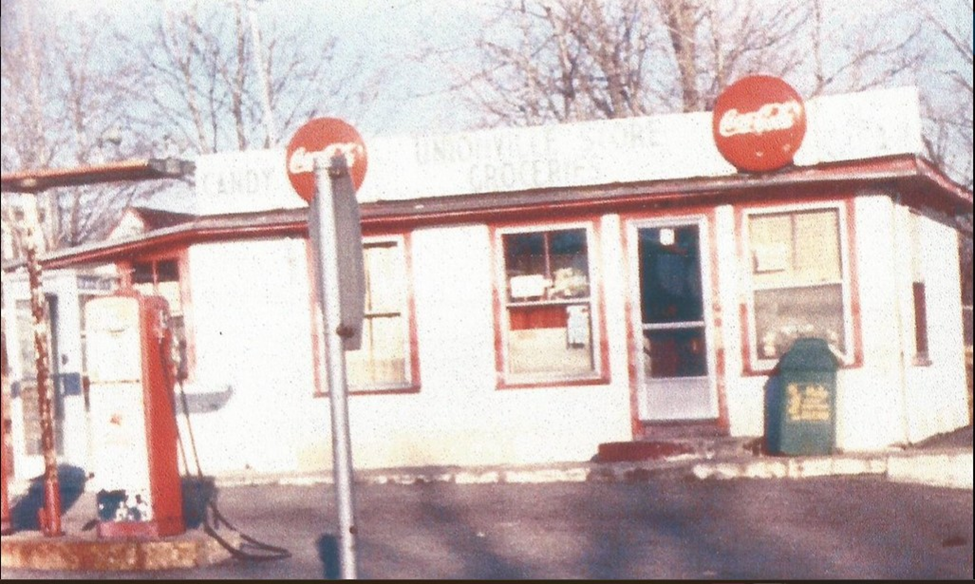 74 Washington Street, Unionville. This building, built in 1930 was on the corner of Washington & Union Street. Sometime during the 1940’s and 1950’s it was known as Peaselee’s having been bought by Floyd and Dorothy Peaselee and operated as a grocery store. Later it was sold to James and Lucinda Murphy. Neighborhood children walked there for candy; sat on the big rock to eat it. Today the store no longer exists. Below is what the corner looks like today. 74 Washington Street, Unionville. This building, built in 1930 was on the corner of Washington & Union Street. Sometime during the 1940’s and 1950’s it was known as Peaselee’s having been bought by Floyd and Dorothy Peaselee and operated as a grocery store. Later it was sold to James and Lucinda Murphy. Neighborhood children walked there for candy; sat on the big rock to eat it. Today the store no longer exists. Below is what the corner looks like today.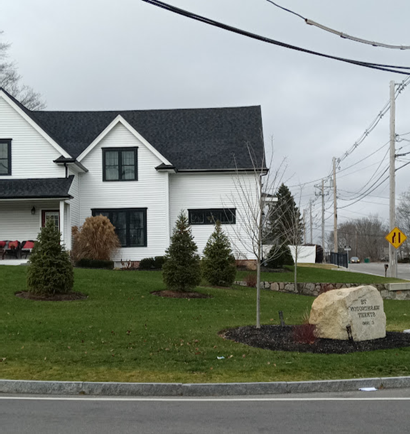 Site of Peaselee’s store as it looks today. Site of Peaselee’s store as it looks today.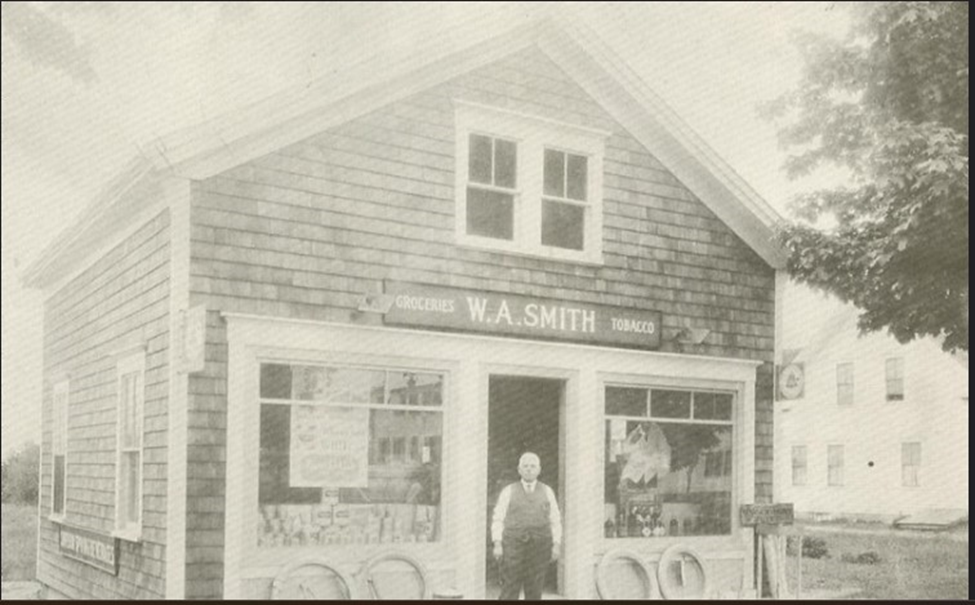 181 Washington Street, Unionville. Swift’s Store, built in 1895. First known as Swift’s Grocery Store, later McMenamy’s Hamburger House, today the Beanery. 181 Washington Street, Unionville. Swift’s Store, built in 1895. First known as Swift’s Grocery Store, later McMenamy’s Hamburger House, today the Beanery. 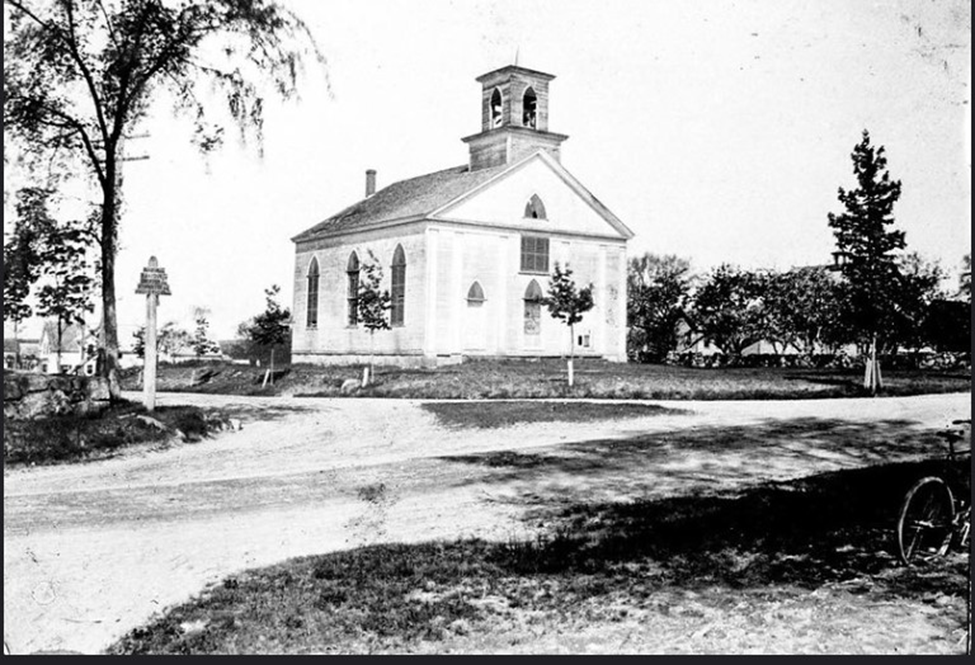 A bit further south on Washington street from Swift's Grocery, on the corner of Elm, was the Square Top Methodist Church. The land for the first church was purchased in 1795. To the left can be seen a corner of the Washington Street Cemetery. The first church here was subsequently moved and the Square Top was dedicated in 1830. It was torn down in the early 1900's. Many different businesses have been located here since. Today the land is part of a private residence. A bit further south on Washington street from Swift's Grocery, on the corner of Elm, was the Square Top Methodist Church. The land for the first church was purchased in 1795. To the left can be seen a corner of the Washington Street Cemetery. The first church here was subsequently moved and the Square Top was dedicated in 1830. It was torn down in the early 1900's. Many different businesses have been located here since. Today the land is part of a private residence.Some remains of Monte's can be seen in the woods off Elm St. extension, the church and Peaslee's are gone now, Swift's store has undergone its own metamorphosis. Time passes. I make my way out of the woods near Monte's old Ice House, getting caught up by briars as I do so. I've been poking around the site but the undergrowth and damp ground make it difficult. I emerge from the woods to see my car parked precariously on the edge of the road. And in the blink of an eye, it's stopped snowing. Anne Wooster Drury ehsnewsletter12@gmail.com Please stop in at the Easton Historical Society and Museum for our December Open House. It will be from 12-4 on December 17th. Great last minute gifts, including glass ornaments, puzzles, vintage Easton maps, books, coloring books for the kids, and so much more. See our new display and view our Station’s “bull’s eye” window from the inside! Also, our Ames tool belt buckle collection and famous suffrage movement artwork from Blanche Ames Ames will be on display. As always, refreshments will be served.
SPECIAL NEWSLETTER/GUEST WRITER Today’s newsletter is written by Chris (Mark) Bergeron after a recent gathering to honor Private First Class Edward “Smitty” Smith, graduate of Oliver Ames High School, the first Easton resident to die in the Vietnam War. “Edward ‘Smitty’ Smith was remembered on Saturday November 4 in a poignant gathering at Beaver Brook Wood of family members, friends, veterans, and a teacher who’d known him since 1962 as an outstanding athlete who lived his life with fearless exuberance and the first Easton resident to die in the Vietnam War. Surrounding a boulder inscribed with Smith’s name and located at a trailhead leading into serene town-owned woods off Poquanticut Avenue, about 25 guests, including five of Smith’s siblings, their spouses and children, shared their memories of their daredevil brother with others and then heard from three Marines who had accompanied him on his last patrol and written his parents heartfelt letters after his death. The hour-long gathering was organized by Mark Bergeron and Dale Kerester, an Easton community activist and Lion’s Club member, who provided customized frames for photographs of Smith in high school and Vietnam to be hung from a nearby tree. At the gathering and at a later meal at Leandros Italian Restaurant, Kerester played pre-recorded telephone calls from Marines David Backer and Jim Rowe II who remembered Smith as a dedicated and courageous platoon member whether in a firefight or teaching survival skills to newcomers. Setting an elegiac tone, brother Jim Smith read a free verse poem, “A Requiem for Smitty,” written by ‘a friend’ to be hung from a nearby tree with his photos that imagined Smith speaking from the dead and asking a passerby to look into his face: ‘I hope they can understand how short and precious life is …/Look into my face – and all the other faces like mine – and remember us.’ In letters to his parents, the Marines who accompanied Smith on his final mission recalled him as courageous under fire, helpful to new platoon members and thoughtful about the complexities of a divisive war. By the rock Kerester played a recording of former Marine David Backer, of Oregon, reading a letter he wrote Smith’s mother describing the time her son saved him from stepping on a Viet Cong booby trap, gave him leather boots to protect him from the soggy jungle and taught him to work with him as a ‘tail-end Charlie’ who ensured no enemy fighters were sneaking up from behind other Marines to ambush them from behind. ‘As I write this, I’m looking at some leather bootstraps that Smitty braided for me to give me good luck. It has constantly reminded me of Smitty and how kind he was to me. My heart aches that he didn’t get to live a longer life and continue his kindness,’ he wrote. Later at Leandros Restaurant, Kerester played an 18-minute recording of former radio operator James Rowe II, of Pennsylvania, recalling an early discussion with Smith while they protected a Montengard village that he’d left college to join the Marines so he could draw his own conclusions about the justness of the war. Guests listened raptly as Rowe described how the 11 Marines dug in atop a small hill behind enemy lines on a reconnaissance mission. Just after night fell, he recalled Smith firing an M-60 machine gun and shouting ‘Here they come’ as the Viet Cong attacked the outnumbered platoon. After the firing stopped, Rowe recalled radioing, ‘We have one American kilo India alpha,’ stunned to realize he was reporting Smith’s death in phonetic radio code. Two Easton residents who’d known Smith since high school in the mid-1960’s remembered him in their own ways for transcending the usual social conventions of being an outstanding athlete and reaching conclusions about classmates on his own. Hazel Varella, who taught 41 years in Easton’s school system and presently serves as treasurer of the Easton Historical Society, said Smith always enlivened her classes with his provocative opinions and, despite a seemingly outspoken public persona, took what he considered the ethical path. In a letter written and distributed to Smith family members for this event, Kevin Dee, a high school classmate who joined the Marines the same time as Smith, concluded the letter as if speaking to him; ‘I think of you often and what you all gave up. You didn’t deserve to have that taken from you. We can honor you by remembering your sacrifice and, as one of the lucky ones, by keeping our promises and not wasting our lives.’ In a voice strained with emotion Bergeron read a short letter to Smith’s parents from former Marine Suluki Qawiy, now member of the Nation of Islam who was born Roger Smith, in which he described Smith as ‘one of the roughest human beings I have ever come in contact with and a rebel. A rebel means he believed in fair play and tried to change what he felt was wrong in the world. To me, freedom, justice and equality was his method of life and that was one of the reasons I loved him so much. … When Smith had his eye on a goal, he went for it all the way. Please let us not refer to those who passed away as dead. They are alive in our hearts. Your brother, Suluki.’” Thank you to Mark Bergeron for providing this moving tribute to his childhood friend. Anne Wooster Drury ehsnewsletter12@gmail.com |
Author
Anne Wooster Drury Archives
April 2024
Categories |

